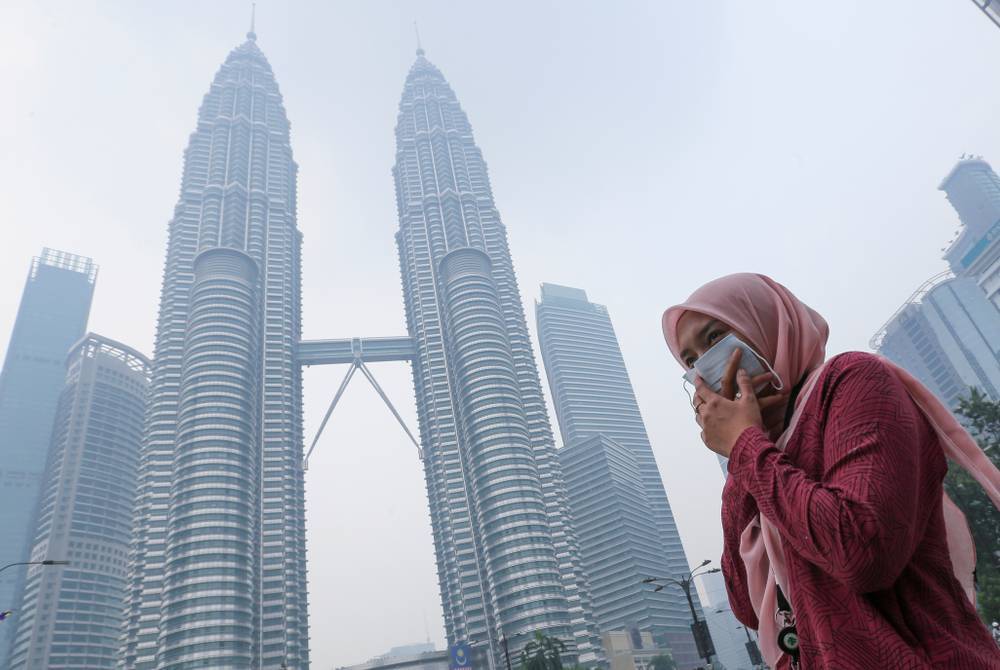As the Meteorological Service Singapore forecasts El Nino conditions and a positive Indian Ocean Dipole to develop in the second half of 2023, countries in Southeast Asia may have to brace themselves for the possibility of transboundary haze.
These meteorological conditions can lead to warmer and drier weather, increasing the risk of forest fires, particularly in Indonesia, and subsequent haze affecting neighboring regions like Singapore, Malaysia, Brunei, and Thailand.
Indonesia, however, has been gearing up for this potential environmental hazard. The country’s coordinating minister for maritime and investment affairs, Luhut Binsar Pandjaitan, has expressed confidence that the haze issue is being addressed appropriately. He highlighted Indonesia’s use of climate modification technology to create early rain for preparing water reserves to combat possible fires.
On Tuesday, Mr Luhut declared that his country aspires to improve the air quality in their capital city, Jakarta, to match that of Singapore. Jakarta often suffers under a blanket of smog and consistently earns a ranking among the most polluted cities globally.
When questioned about the haze issue, he responded, “I believe, haze is not really an issue anymore.”
Haze, caused by forest fires in Indonesia, has consistently troubled the Southeast Asian region over the past decades. Large-scale burning incidents across Sumatra and Borneo in 2013 led to a haze crisis impacting numerous countries, including Singapore, Malaysia, Brunei, and Thailand.
Practical Steps for Individuals
Despite the reassurances, it remains crucial for residents in affected areas to know what they can do to protect themselves from the health risks that haze can bring.
- Stay Informed
Monitor local news and reliable websites to stay updated on the Air Pollution Index or Pollutant Standards Index (PSI). These indices measure the air quality in your location and can guide you in taking necessary precautions. - Limit Outdoor Activities
During periods of unhealthy air quality (PSI above 100), try to stay indoors as much as possible, particularly if you have respiratory conditions, are elderly, or have young children. - Use Air Purifiers
If you have an air purifier at home, it can help to clean the air inside your house. Air conditioning can also help to filter out some of the pollutants. - Wear Masks
If you need to go outside, consider wearing an N95 mask, which can filter out fine particles in the haze. - Maintain Hydration and Eat Healthily
Drinking plenty of water can help to flush out any toxins absorbed through the skin or lungs. A diet rich in fruits and vegetables can also boost your immune system.
Long-term Solutions and Citizen Participation
In the long term, countries are also exploring collaborative measures to address the root causes of haze. These are mainly driven by human activities such as slash-and-burn agriculture and deforestation. For instance, Indonesia has recently signed a US$20 billion Just Energy Transition Partnership (JETP) deal aimed at helping the country transition from fossil fuels to renewable energy.
Individuals can also contribute to the larger goal of environmental preservation. This is done by supporting sustainable products, reducing their carbon footprint, and advocating for climate-friendly policies.
Conclusion
The return of the El Nino presents challenges. However, it also offers an opportunity for countries in Southeast Asia to demonstrate resilience, collaboration, and innovative problem-solving to safeguard their environment and the health of their citizens.

